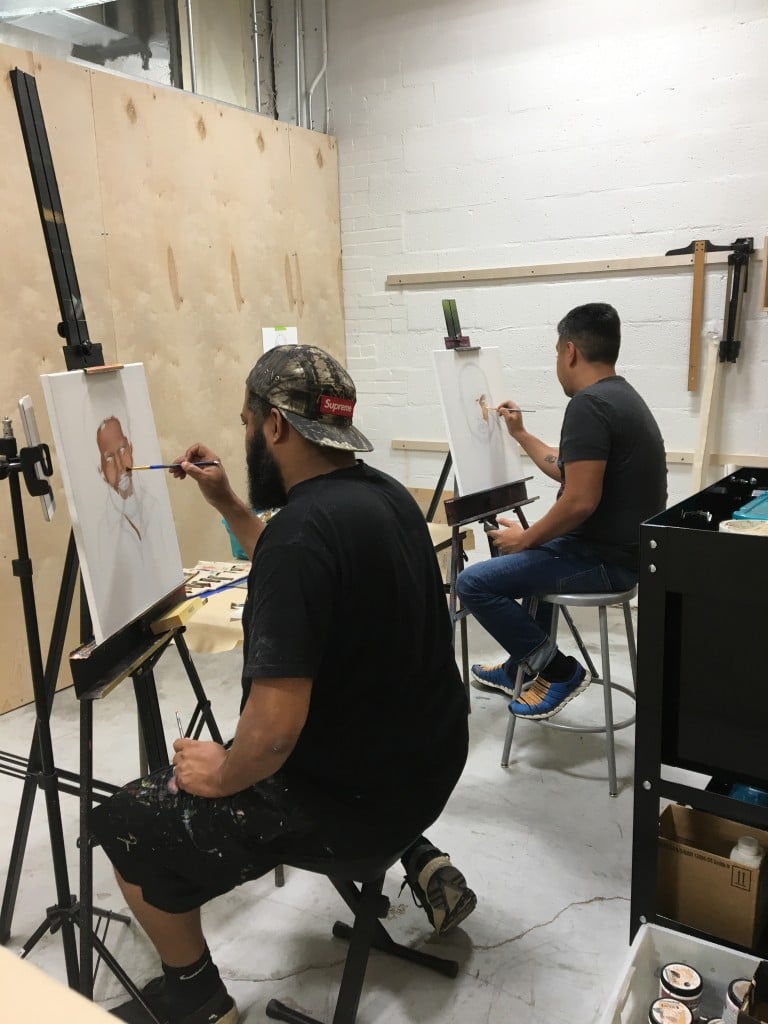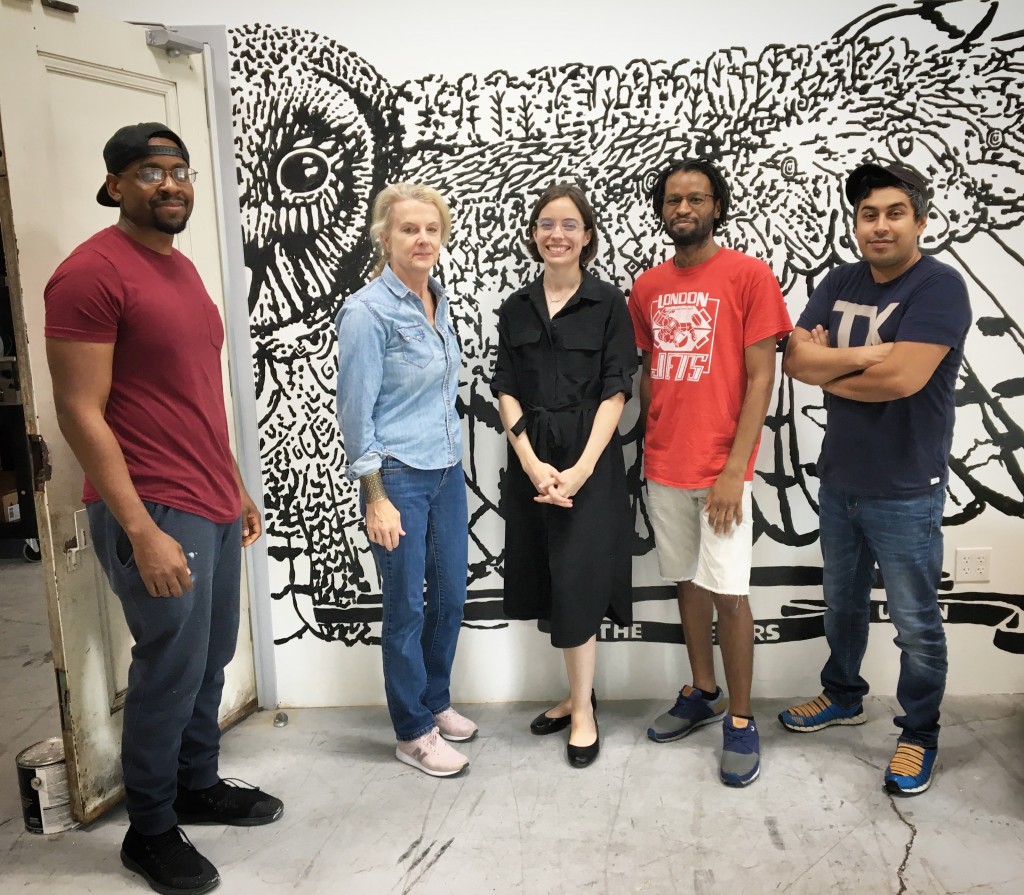The Cedars Union: Art Studios Without Doors
ArtandSeek.net August 17, 2018 17A few years ago, Jerome Weeks wrote about the Bowden Family Foundation purchasing an old ice cream factory in the Cedars neighborhood in Dallas. The plan was to one day convert it into an incubator for artists. But now, they’re testing out the idea in a smaller warehouse nearby. 10 artists have moved into the space: Riley Holloway (who was just in the Art&Seek Spotlight yesterday), Melissa Drumm, Laura Lawson, Kevin Owens, Hatziel Flores, Jeremy Biggers, Fari Rahimi, Sheryl Anaya, Shawn Saumell and Joel Murray. And there’s room for five more.
In addition to the co-working space for artists, the Cedars Union is also installing a wood shop, a computer lab, including a 3D printer, and other equipment, such as an industrial sewing machine. The plan is to eventually have memberships for people who want to use the maker space, but don’t need studios.
In State of the Arts, I caught up with Erica Felicella, artist liaison for Cedars Union.
I visited the space recently and what’s striking when you walk in is it’s a room full of cubicles. Now, I’ve visited a lot of very different artist studios, but one thing they usually have in common is walls. What’s the thinking behind this design?
So the founders came out of art school, both Megan and Matthew Bowdon. And they realized that when you leave, you miss and lose community. And with that, resources and so on.
You also lose community when you close the door.
So, Matthew, being an industrial designer, actually created this concept of the micro studio. The micro studios, as you saw Anne, don’t have walls, and they don’t have doors. But you have a significant floor print. It is your floor space that is yours to claim. What’s already starting to work now that artists are coming in, is that you’re never alone in the space. You can work quietly to yourself or you have a peer next to you that is someone you can reach out to.

Jeremy Biggers and Hatziel Flores painting. Photo: Erica Felicella
I get the whole community aspect of that. But how do you prevent paint dripping from one side to the other, or wood chips flying onto delicate artwork?
We do have, just like any space, rules. We have a no-particulate-in-the-air policy. So if you’re doing something that sprays or flies or produces something that’s going to waft into another space, you have to take that work outside. Nothing should be flying in the air.
We may have a wild painter. We’ll see where it goes. Right now, everyone’s been pretty well contained.
And what about security? When I was walking around I could have put my arm into someone’s space and just lifted up a computer or a piece of artwork.
Absolutely, it’s definitely a question that the artists ask when they take a tour of the space. Each artist gets their own locking tool chest, so that’s step one. Step two is that we’ve installed a very secure camera system. And also, it’s a self-policing facility. So it’s an honor system.

Riley Holloway, Melissa Drumm, Laura Lawson, Kevin Owens and Hatziel Flores. Photo: Erica Felicella.
In the warehouse you’ve got space for 15 artists. And several are already moving in. Where were they working before?
A lot of the artists were either on the verge of losing their space and needed new space. Some of them had studios. Some of them were fresh out of school. Some of them just working from home. They wanted the community. So they’re coming from a place of solitude to a place of community engagement.
So you’re making studio space available to artists for anywhere from a dollar to $1.50 a square foot. Artists can stay there for up to 18 months. I imagine there are going to be a lot of people who would be interested in this deal. How are you choosing who can participate?
So we decided to go through a jury process of community advocates and peers. You have to meet the criteria, which is to have a BA, an MA, an MFA, or three years of dedicated practice. And go through the very simple application process. And then we supply you with space and we hope to incubate you to the next level.

Fari Rahimi. Photo: Erica Felicella
You’re also creating maker spaces with top-of-the-line equipment like 3D printers and industrial sewing machines. And these aren’t just for the artists who are renting space.
Correct. As we do our soft opening rolling to our larger opening, the intended direction is to have what we call shop artists, which are day-use artists who will have access to the labs and shop facilities. They just don’t have any actual physical studio space.
And you’re also setting up seminars with lawyers and accountants…
In order to be a true incubator, we treat artists in the round. We don’t just offer space. We don’t just offer resources. And we don’t just offer programming. We get the opportunity to put it all in one package
Part of the Cedars Union way is to recognize that we’re entrepreneurs. There’s entrepreneurship training for all different types of careers. But we don’t find it so often for creatives.










